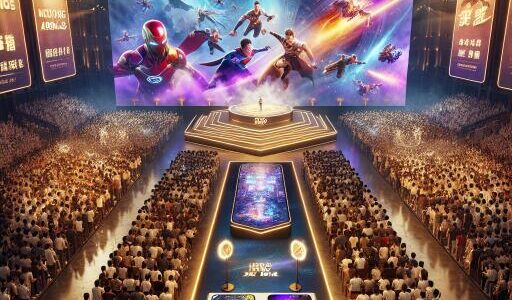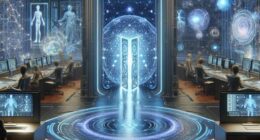Transforming Educational Spaces with 3D Scanning for Virtual Tours
In the evolving landscape of higher education, virtual reality (VR) is not just a novelty but a pivotal tool in enhancing the educational experience. Universities around the globe are investing in making VR technology accessible to students, recognizing its potential to bridge gaps between traditional learning and practical, immersive experiences. This shift towards virtual learning spaces opens up a plethora of opportunities to engage students in unique ways, preparing them for a technologically advanced workforce.
One innovative approach to integrating VR into education has been demonstrated through the utilization of 3D scanning technology to create virtual tours. Such tours offer a dynamic way to familiarize students with educational spaces, instruments, and resources, ensuring they make the most out of their learning environments.
Case Study: The Martin Harris Centre for Music and Drama
The Martin Harris Centre for Music and Drama houses a remarkable array of musical instruments, including Steinway pianos and diverse percussion and gamelan instruments, alongside a professional 350-seat concert hall and recording studios. These assets are not only valuable but require meticulous care and handling. Following the challenges of the pandemic, the need for an innovative solution to educate students about proper space usage and equipment care became evident.
The response was to harness the capabilities of Matterport 3D scanning technology. This cutting-edge tool allowed for the creation of an interactive and engaging digital twin of the building. The goal was to enhance student orientation, providing a comprehensive virtual tour that could impart crucial information effectively.
The process of creating a 3D scan is intricate and demands patience and problem-solving skills. Despite initial challenges, such as dealing with repetitive structures and potential scanning errors, the outcome is a highly detailed virtual model of the space. This model not only supports student inductions but offers a myriad of other applications, from virtual open days for prospective students to assisting individuals with access needs.
Implementation and Impact
Following the project’s completion, the feedback was overwhelmingly positive. The virtual tour not only facilitated a reduction in the misuse of the facilities but also streamlined communication, reducing the need for staff to manage queries about the usage of space via email. The digital twin proved to be an invaluable resource beyond just student induction; it was a versatile tool for administrative purposes, teaching, learning enhancements, and improving the overall student experience.
Moreover, the initiative showcased the potential for 3D scanning technology to be applied in various contexts, from laboratory inductions to heritage tours, making previously inaccessible spaces open for exploration. The significant interaction and positive outcomes from this project highlight its success as a cost-effective, innovative introduction to 3D scanning in an educational setting.
Bringing Virtual Tours into Your Educational Program
Integrating 3D scanning technology for virtual tours within your institution can be a transformative approach to engaging students. It’s a testament to the power of VR in education, offering a bridge between theoretical knowledge and practical application. As this technology becomes more accessible and familiar, its applications in enhancing educational experiences are bound to expand, paving the way for a future where learning is an immersive, interactive journey.
In conclusion, 3D scanning technology offers a novel and effective method to engage and educate students, ensuring they receive a comprehensive understanding of the resources available to them. By adopting such innovative tools, educational institutions can enhance the learning experience, making it more interactive, engaging, and effective in preparing students for the future.









